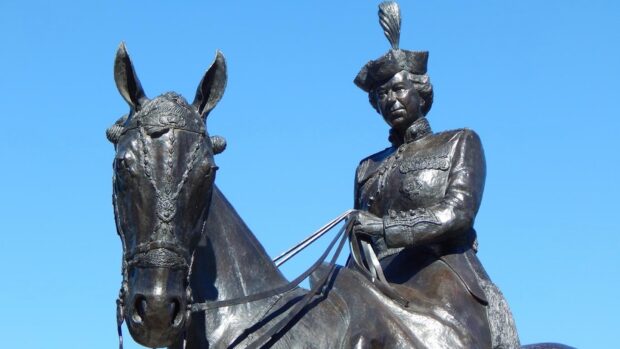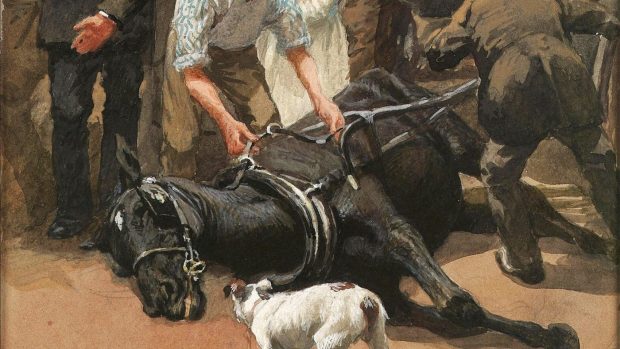For the first time in 100 years, 41 of Sir Alfred Munnings’ works, painted on the Western Front in 1918 are going to be exhibited in Europe at the National Army Museum (30 November – 3 March). They tell an evocative story of the service and sacrifice of both soldiers and horses and Munnings’ career was largely established as a result of this work with the Canadian Expeditionary Force.
Here, Brough Scott (whose grandfather General Jack Seely was riding ‘Warrior’ in one of Munnings’ most iconic images — pictured below on the front of this week’s Horse & Hound magazine) lists a few things  people may not know about Sir Alfred.
people may not know about Sir Alfred.
1. Munnings wanted to go to war but was refused because he was blind in his right eye. It had been pierced by a thorn hedge when he was just 20.
2. It was Lord Beaverbrook who sent him to the front as a war artist in January 1918. The then Max Aitken had organised a group of painters to commemorate the Canadian War effort.
3. On his way to the front he was challenged as to what he was by a blimpish colonel. “Back home,” said Munnings from behind the eye patch, “they say I am a genius.”
4. The famous warhorse Warrior was the first picture Munnings painted at the front. He had been dispatched to the Canadian Cavalry commended by Warrior’s rider Jack Seely, a close friend and former Cabinet colleague of Winston Churchill.
5. The Canadian Cavalry came from all across the nation and really did include what we used to call Cowboys and Indians. When they were deployed in the trenches the Germans were scared by a rumour of scalpings in No Man’s Land.
6. The original Winnie The Pooh was part of the Canadian Cavalry. Winnipeg-based vet Harry Colebourne bought a little bear cub en route to embarkation, but when the regiment crossed to France Winnie went to the London Zoo and became very popular. Especially to an author called A.A. Milne and his son called Christopher Robin!
7. Munnings was a fine horseman himself and rode Warrior and many other horses before having to leave the regiment after the big German breakthrough in March 1918.
8. The Canadians were so impressed with his cavalry paintings that they then switched him to the Canadian Forestry Corps who in 1918 produced 750,000 tons of timber for roads, railway sleepers, huts, hospital and plain steam engine fuel. So Munnings also painted the ‘lumberjacks’.
Continued below…

Remembrance Day: how were horses transported during World War One?
9. The Royal Academy Exhibition of Canadian War Paintings in January 1919, and in particular the painting of Jack Seely on Warrior, was the springboard to Munnings’ later fortune as an equestrian painter to the rich and famous. To my mind, those later pictures weren’t a patch on the front-line work!
10. His well-wined President’s speech at the 1949 Royal Academy was broadcast live on the BBC with disastrous results. His slurred rubbishing of modern art ruined his reputation. This exhibition may go a long way to repair it.
For all the latest equestrian news and reports, don’t miss Horse & Hound magazine, out every Thursday




